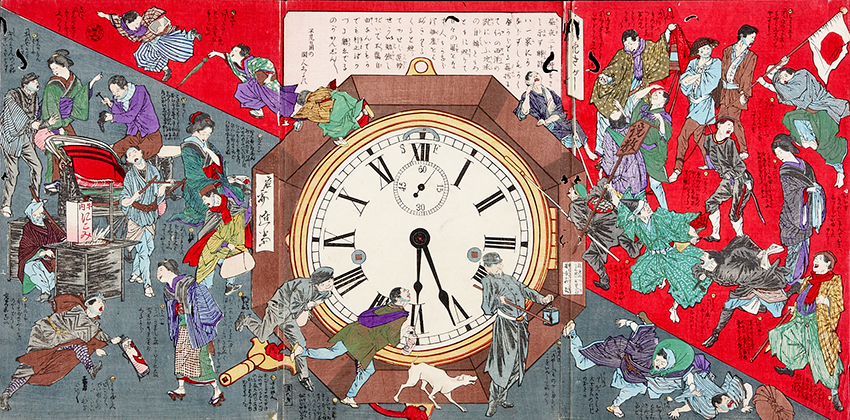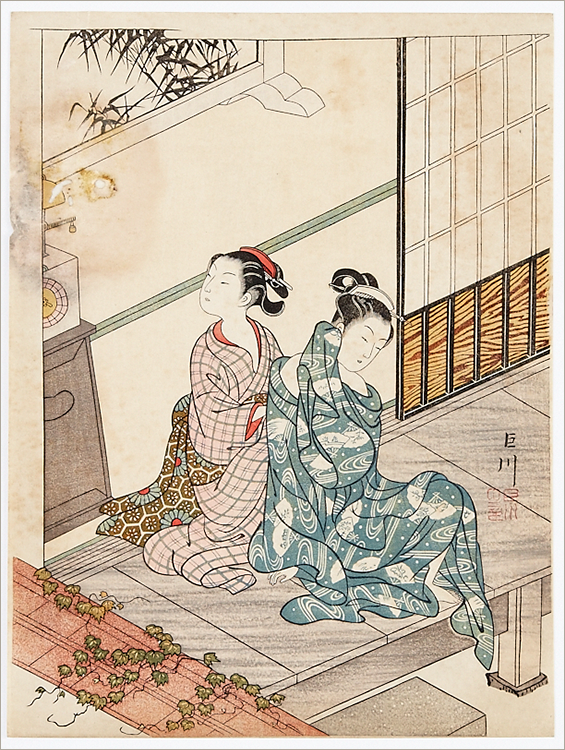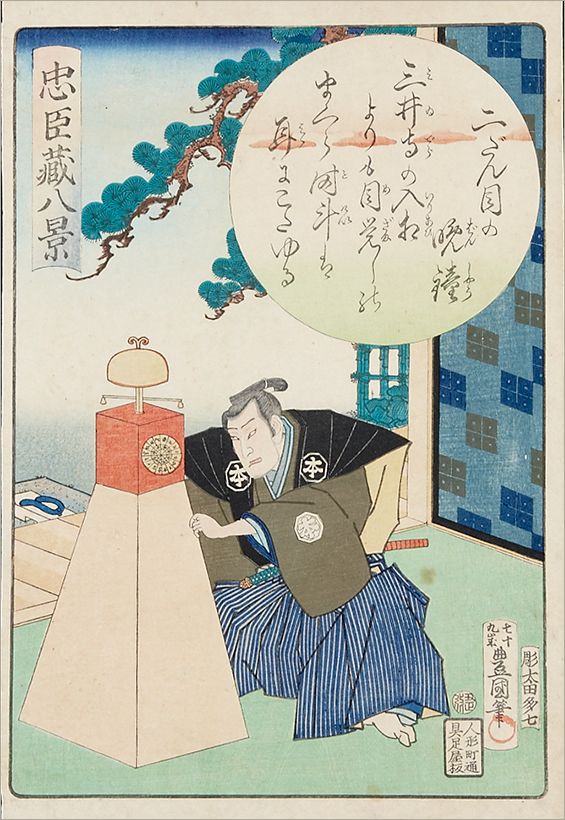The Seiko Museum
6.Nishiki-e—Colorful Woodblock Prints
One surprise for fans of traditional Japanese culture when visiting the Seiko Museum is that the facility has an extensive collection of Japanese brocade prints, called nishiki-e. Some are on display at any one time. The bonus for timepiece lovers is that each print includes or highlights a Japanese clock, or wadokei.

Recapping an Earlier Installment
Followers of this series on the museum will recall an earlier installment, titled Treasuring Traditional Time-Keeping , in which we overviewed wadokei. We promised to highlight some nishiki-e. If you would prefer to read that story on some other occasion, the relevant information here is that wadokei showed time by dividing the day into two zones, each with six Japanese hours, with corresponding zodiac signs for each.
What Are Nishiki-e?
Nishiki-e were very colorful commercial prints. The term derives from the combination of nishiki, which were colorful silk brocades, and e, or pictures. Many readers may think of nishiki-e as ukiyo-e.
Nishiki-e were made by taking impressions from separate woodblocks carved for each color. The blocks had registration marks to ensure consistent accuracy when printing. The inventor of this process was apparently Harunobu Suzuki, in the 1760s. The Seiko Museum is blessed to have at least one example of his work, which we will touch on a little later.
Collection Highlights
The first print of special note is from Suzuki Harunobu (we have put his surname first, as per Japanese name order), in view of his inventing the nishiki-e genre. This work is called The Evening Bell of the Clock, created in around 1766, and features two women. One is apparently drying herself after a bath and the other is gazing at the clock. The print is from a series called Eight Views of the Parlor.

Suzuki Harunobu print
Another valuable piece in the Seiko Museum's collection is The 12 Hours of the Green Houses, by Kitagawa Utamaro, who was famed for his images of idealized beauty and who greatly influenced the Impressionist movement in the 19th century. This print appears to be part of a whole series by Utamaro that featured beauties portrayed at the 12th hour in the Japanese time system.

Kitagawa Utamaro print
A third example of particular note is from Utagawa Kunisada, also known as Utagawa Toyokuni III. The print depicts a samurai setting a single-folio lantern clock in a scene from the Chushingura. That play was a fictionalized account of the 47 samurai who took revenge for the ritual suicide of their lord. The Seiko Museum has a similar clock in its collection, with double folio balances. This print featured in a stamp collection that Japan Post issued in 2004.

Utagawa Kunisada print
Next Up…
In the next installment of this series about the Seiko Museum, we take a glance at the famous Seiko 5, a mechanical watch series that has remained incredibly popular since its debuted in 1963.